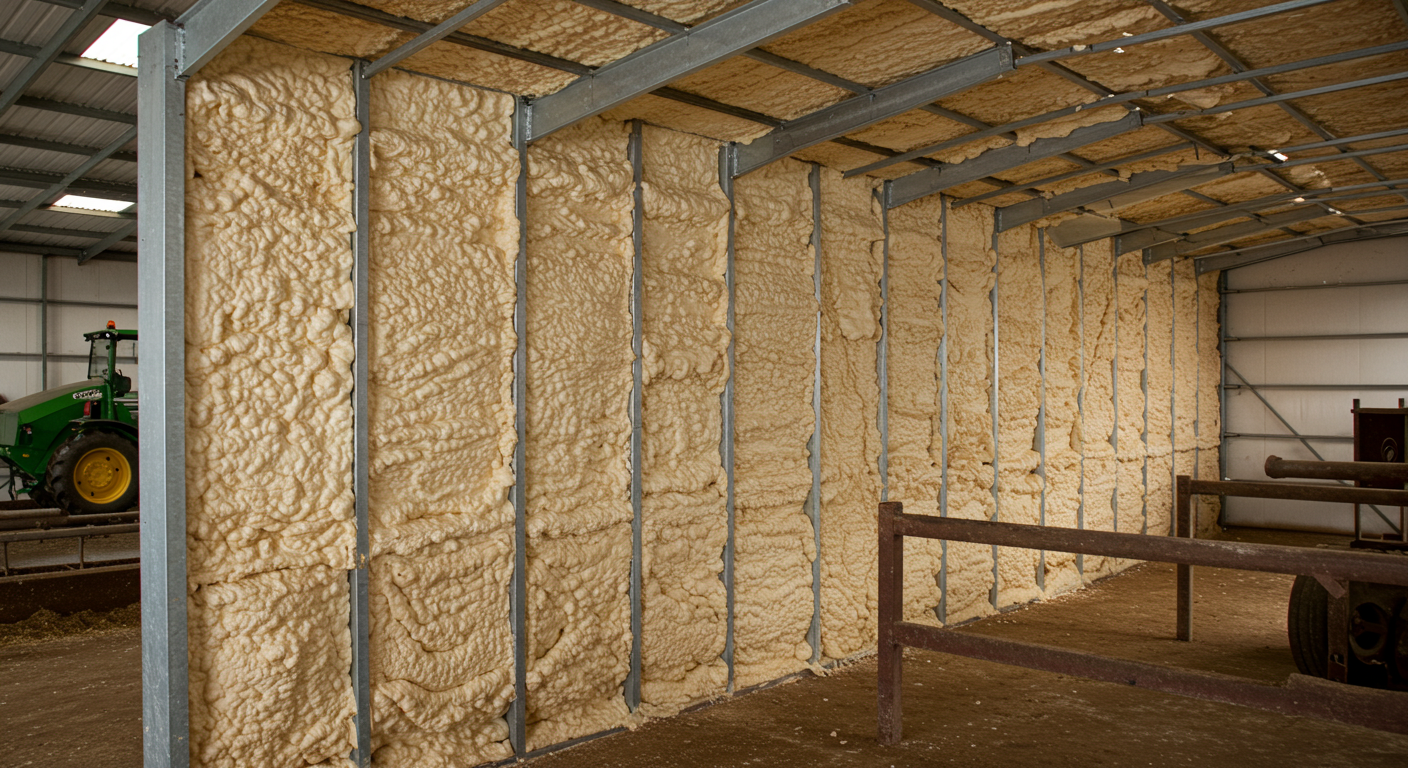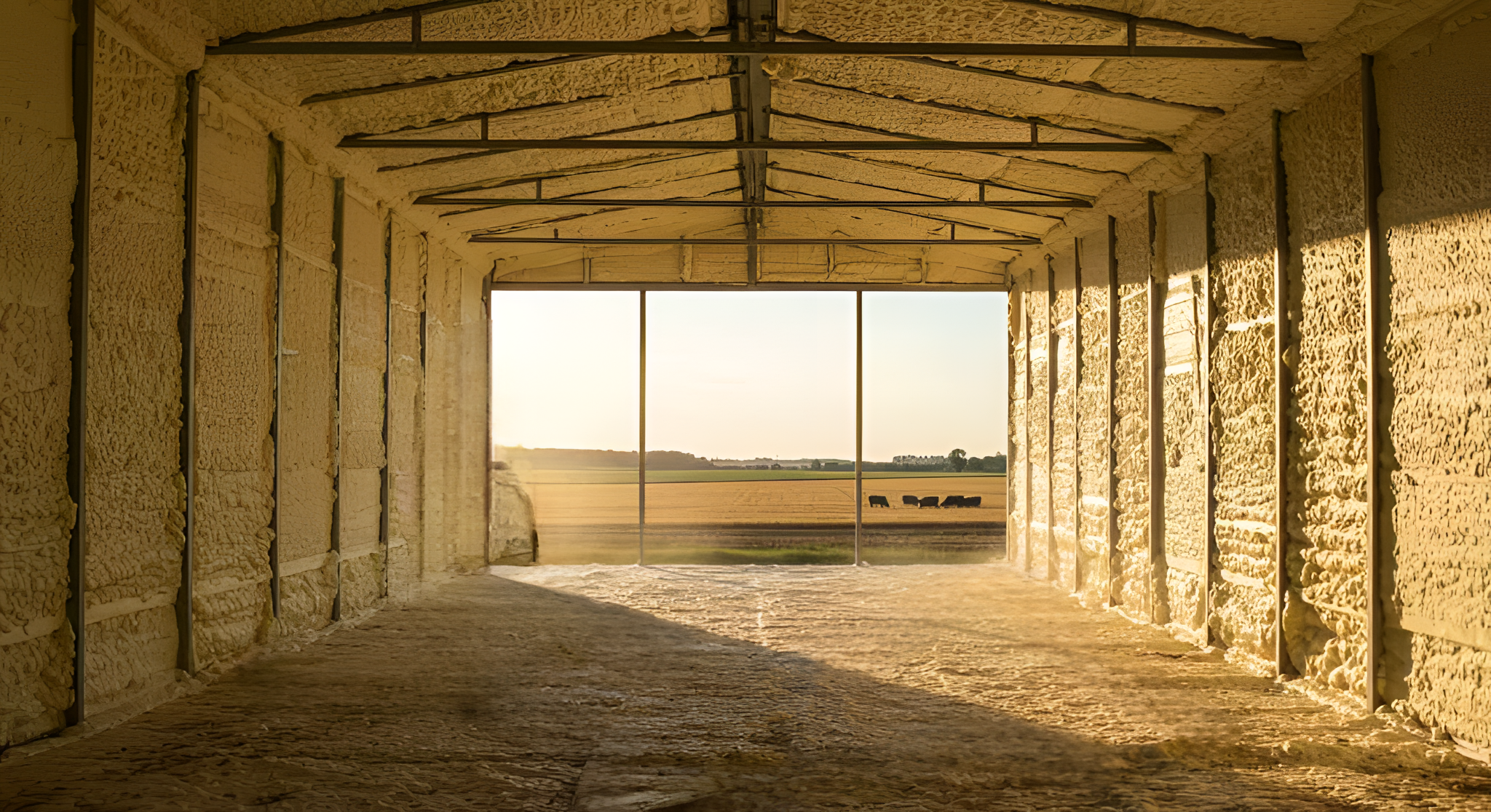
Spray foam insulation contributes directly to structural strength by increasing wall and roof rigidity, enhancing moisture resistance, and stabilizing temperature fluctuations. In Joplin, MO, where temperature extremes and seasonal storms are common, these factors play a significant role in long-term structural integrity. Ozark Eco Foam notes that closed cell spray foam in particular can improve racking strength, which resists lateral loads caused by wind or shifting soil conditions.
Independent third-party testing confirms that closed cell spray foam can increase wall racking strength by up to 300% when properly installed between wall studs (National Association of Home Builders Research Center, 2023). This structural reinforcement provides a measurable benefit in areas prone to wind damage, such as the Joplin region.
This article explains how spray foam insulation enhances structural durability across residential, commercial, and agricultural buildings, with emphasis on technical data and local relevance.
| Spray Foam Type | Structural Reinforcement | Water Resistance | Thermal Stability | Air Barrier Properties |
|---|---|---|---|---|
| Closed Cell Spray Foam | High (adds rigidity) | Excellent | High | Excellent |
| Open Cell Spray Foam | Low (flexible) | Moderate | Moderate | Good |
| Attribute | Closed Cell Foam | Open Cell Foam |
|---|---|---|
| Density | ~2.0 lb/ft³ | ~0.5 lb/ft³ |
| Compressive Strength | 20-30 psi | 4-6 psi |
| Water Permeability | <1 perm | >10 perms |
| Racking Wall Strength Gain | Up to 300% | Minimal |
| Vapor Barrier | Yes | No |

Buildings in Joplin face frequent high winds, heavy rainfall, and severe temperature shifts. Spray foam’s bonding qualities help minimize structural movement under lateral forces. Closed cell insulation, in particular, adheres tightly to studs and sheathing, helping the wall system function as a single load-bearing unit.
Bonus Tip: During storm season, buildings with spray foam insulation often experience less internal damage due to the foam’s ability to hold structural elements together after outer surfaces fail.
Full-depth fills in wall cavities (typically 3.5” for 2×4 walls) allow the foam to bond across all interior surfaces, providing maximum racking resistance.
Foam must be applied to clean, dry substrates to ensure adhesion. In older buildings, surface preparation directly affects strength gains.
Allowing appropriate curing time between passes avoids thermal stress, which can compromise the structural integrity of the cured foam.
Bonus Tip: In mixed-use structures, apply closed cell spray foam to load-bearing walls only to balance cost with reinforcement needs.
Minimum 2 inches of closed cell foam is generally required to improve racking strength.
No. It supplements but does not replace required structural elements like sheathing and cross-bracing.
Only marginally. It’s primarily used for soundproofing and basic thermal performance.
Yes, but proper surface prep is critical for adhesion to metal panels.
For expert recommendations based on building type, local weather, and structural goals, contact:
Ozark Eco Foam Phone: (417) 572-5893 Email: ozarkecofoam@gmail.com
Discuss project-specific needs with experienced technicians familiar with building performance across Southwest Missouri. Schedule an inspection to evaluate your structure and identify areas where spray foam could provide added reinforcement.
Closed cell foam maintains rigidity for decades if not exposed to UV or physical damage.
Properly applied closed cell foam is dimensionally stable. Poor installation can cause defects.
No. The benefits become apparent under stress loads such as wind, impact, or shifting foundations.
No. It must be paired with a thermal or ignition barrier for fire compliance.
Yes, but surface temperature must meet the product’s curing requirements.